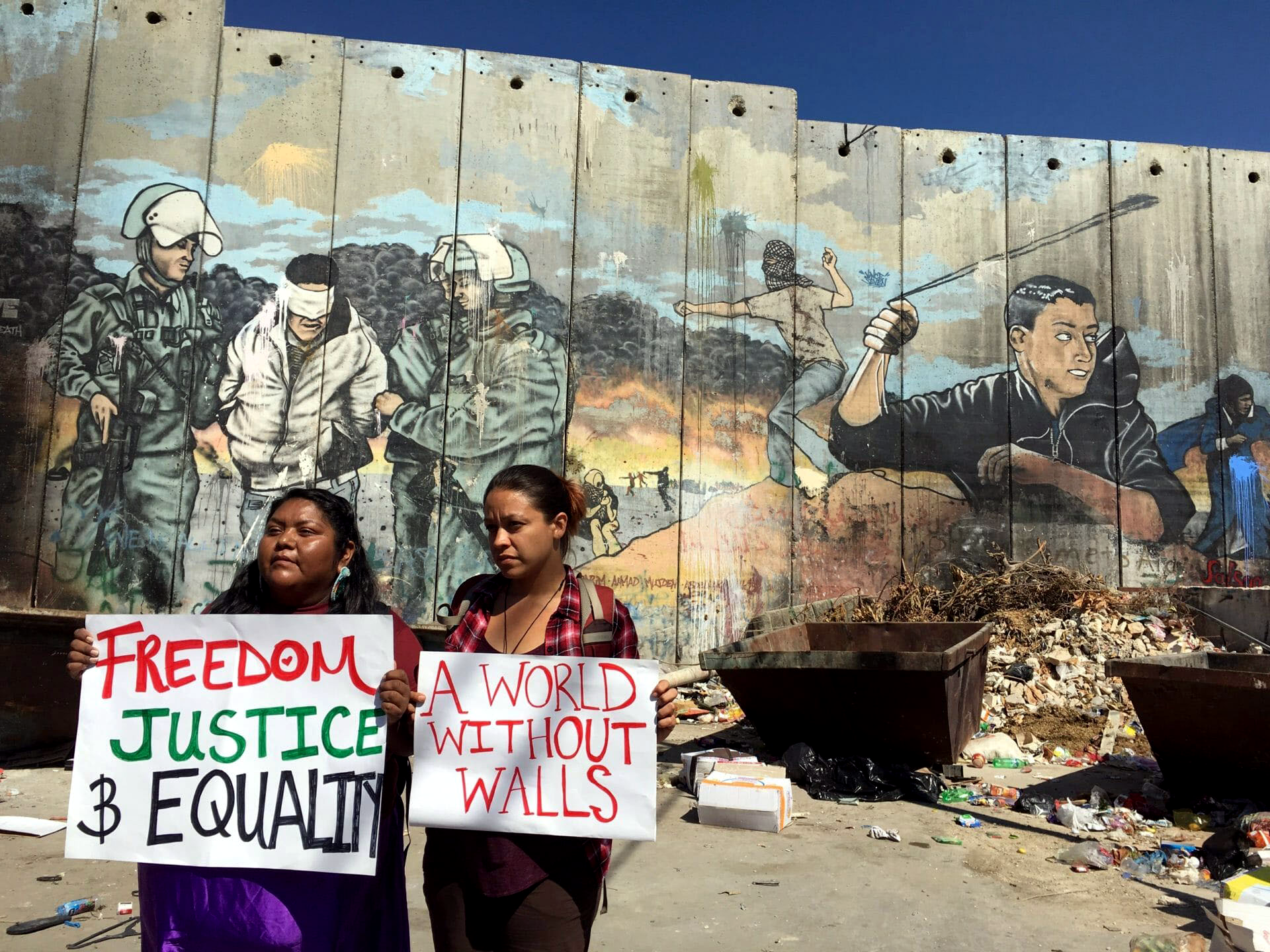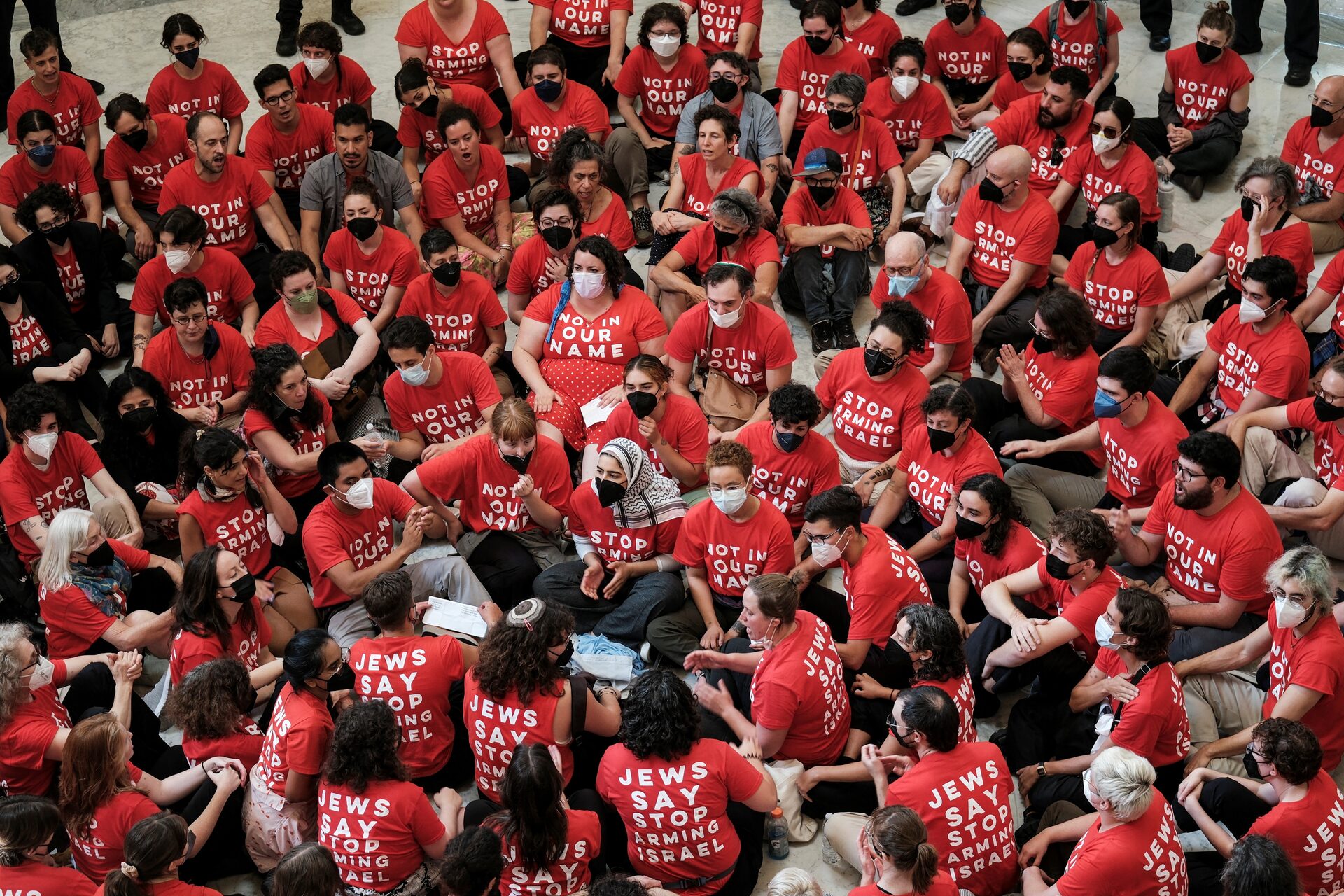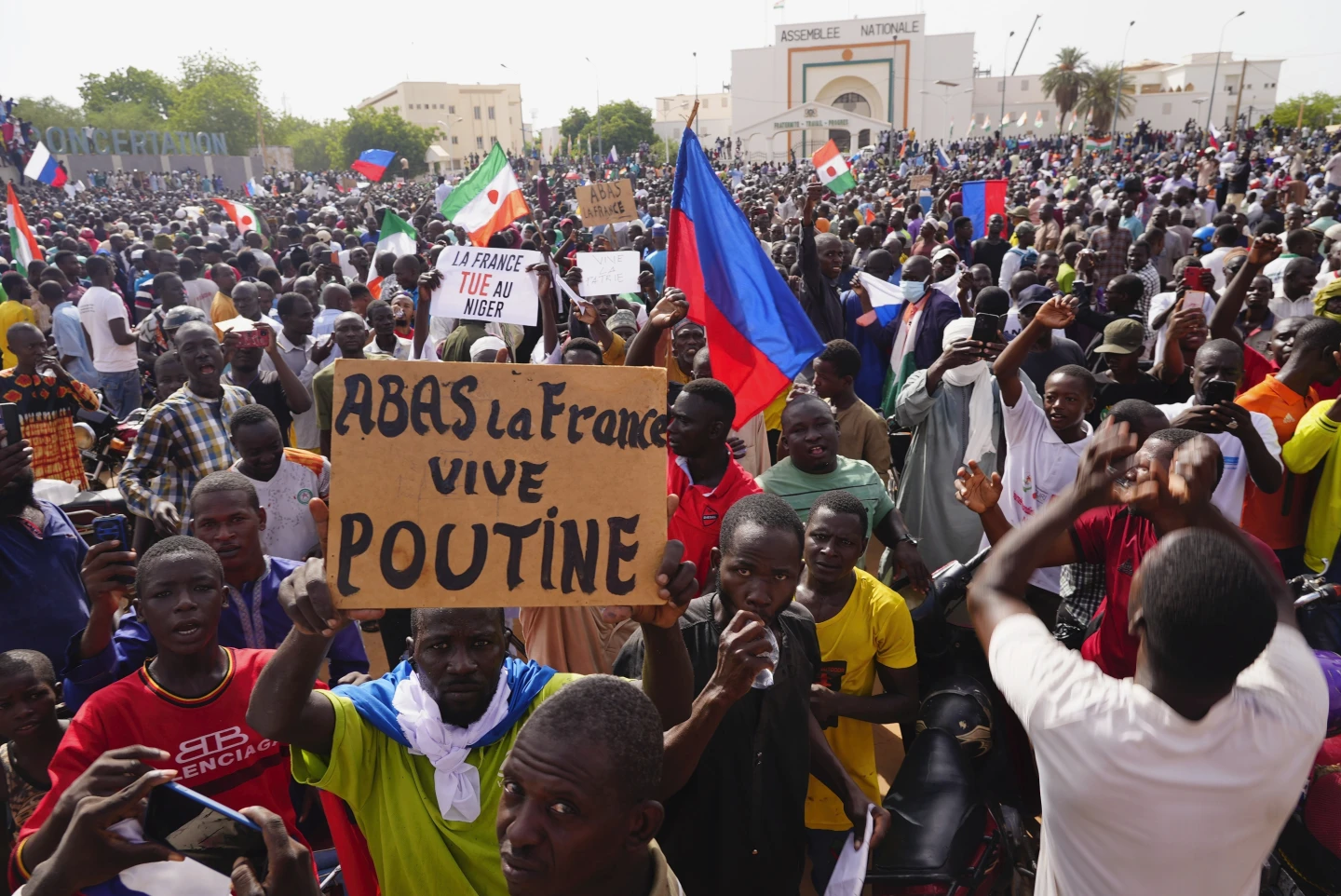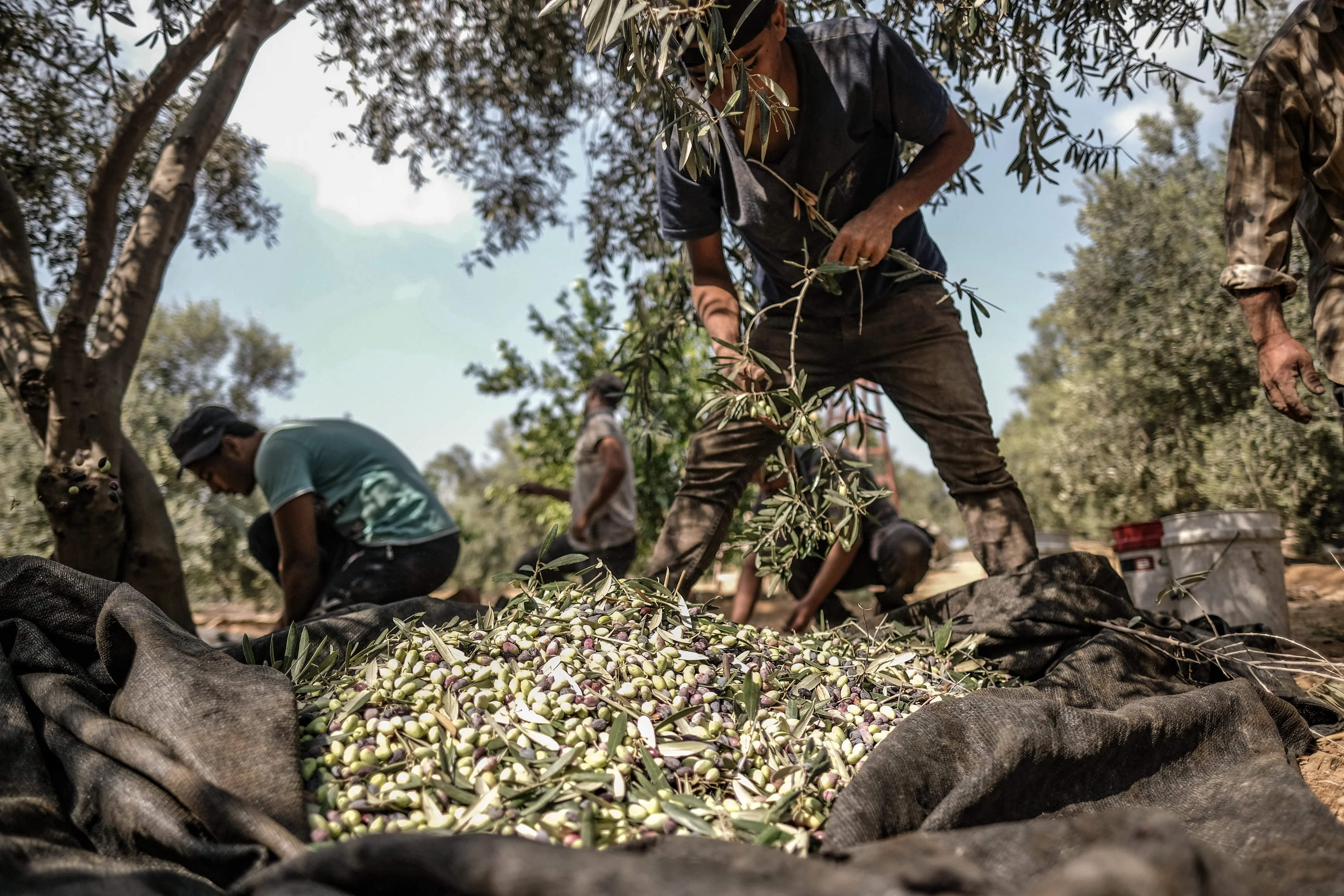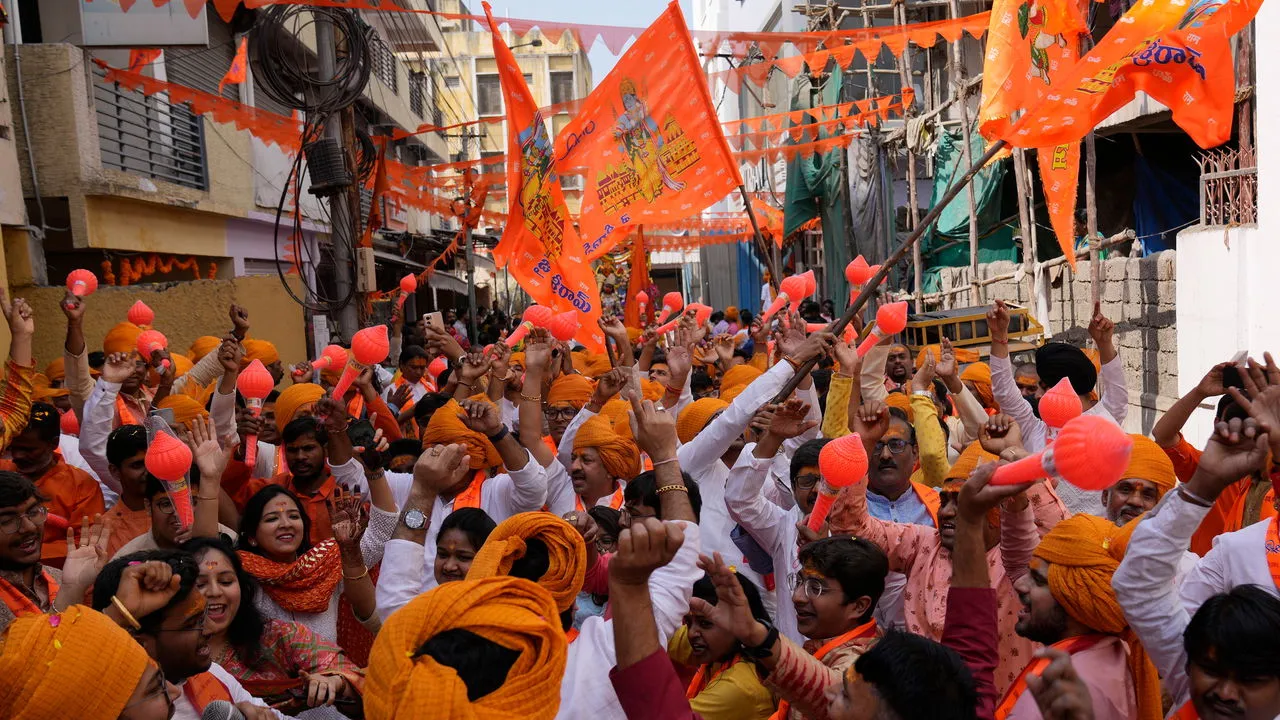Distorted Rhetoric: A Dictionary for Discussing Palestine
The language of the movement for Palestinian liberation is distorted by bad-faith campaigns to appear violent, inflammatory, and antisemitic. These distortions rely on falsified meanings that flatten Palestinian history through racist caricature. Why not ask Palestinians and pro-Palestinian protestors ourselves what our language means?
Zionism is a political ideology and ethno-cultural nationalist movement that emerged in the late 19th century to establish a Jewish state. The movement manifested in the colonization of Palestine, partly a response to the antisemitism Jews encountered in Europe and an answer to the “Jewish question.” Modern Zionism’s goal — to form a Jewish majority state in the land between the Jordan River and the Mediterranean Sea — involved the marginalization and dispossession of indigenous Palestinians, sparking the Nakba in 1948 and the following seven decades of Israeli expansion, which violently persists.
Nakba, Arabic for “catastrophe,” is the violent dispossession and ethnic cleansing of Palestinians, exemplified by Zionist military forces’ destruction of 530 Palestinian villages, massacre of 15,000 Palestinians, and displacement of 750,000 refugees from 1947-1949. Phrases like the “ongoing Nakba” or “the Nakba never ended” allude to Palestinians’ continued experience of dispossession.
Genocide refers to the intentional destruction of a national, ethnic, racial, or religious group, “in whole or in part.” This year the International Court of Justice concluded that Israel is committing acts of genocide against Palestinians in Gaza. They’ve pointed to the incitement of and encouragement to genocide made by Israeli politicians, the forced displacement of Gazans from their homes, the elimination of humanitarian aid, and the refusal of access to medical care.
Apartheid describes a system of institutionalized racial segregation and discrimination, epitomized in the policies of the Israeli government that create and maintain separate legal systems and unequal rights between Jewish Israelis and Palestinians. This is most pronounced in the West Bank, where Palestinians live under military law while Israeli settlers live under civilian law. The term also applies to the blockade and siege of Gaza, and to Israel, where there are 65 national laws that discriminate against Palestinians.
Occupation refers to Israel’s use of military force to control its territory. In the West Bank, a series of Israeli checkpoints, roadblocks, and barriers restrict Palestinian mobility. Israel encourages settlers to seize land and forcibly remove Palestinians from the West Bank, in violation of international law. Although Israel disengaged from the Gaza Strip in 2005, it still controls Gaza’s airspace, offshore territory, border crossings, and the flow of goods and people.
BDS (Boycott, Divestment, and Sanctions) is a nonviolent movement founded in 2005 to end international support for Israel’s ongoing oppression of Palestinians. In the legacy of the anti-apartheid movement in South Africa, BDS organizes boycott campaigns against companies complicit in Israeli occupation, including HP, Siemens, AXA, Puma, Sodastream, Ahava, and Sabra. It pushes for banks, companies, and institutions to divest from business in Israel. The movement calls on governments to fulfill their obligations to international law and impose sanctions on Israel.
The right of return is the political right of Palestinians — both first-generation refugees displaced by the 1948 Nakba and the Six-Day War and their descendents — to return to and reclaim the land they have been forced to leave. United Nations General Assembly Resolution 194 (1948), Article 11 affirms this right.
The right to resist presents a moral or legal justification to oppose oppression, occupation, and colonization, including through protest, civil disobedience, and armed struggle. This right is enshrined in the United Nations’ affirmation of the “legitimacy of the struggle of peoples for independence, territorial integrity, national unity and liberation from colonial domination, apartheid, and foreign occupation by all available means, including armed struggle.”
The one-state solution is a proposed resolution envisioning a pluralist, democratic, secular state in all of historical Palestine to accommodate the rights and livelihoods of Israelis and Palestinians alike. In this proposal, all inhabitants — Jewish, Palestinian, Muslim, Christian or other — would be given equal citizenship and civil rights. The primary concern for Zionists in the scenario is the loss of a Jewish demographic majority; for Palestinians, it is whether they will actually have their rights guaranteed in such a state, given the existing power relations.
The two-state solution is a proposed resolution that establishes the sovereignty of both the State of Israel and an independent State of Palestine, dividing historical Palestine between the two nations. While this solution is popular amongst the international community, including the United States, Israel staunchly rejects it, arguing that an independent Palestine and Palestinian self-determination would pose an inherent threat to its security.
Intifada derives from the Arabic root nafada: “to shake off.” An intifada is an uprising or resistance movement against oppression. In Palestine, “intifada” refers to mass uprisings against Israeli occupation, including the First Intifada (1987-1993), which began in the Jabalia refugee camp after an Israeli truck driver collided with a civilian car, killing four Palestinian workers; and the Second Intifada (2000-2005), which was triggered by the failure of the 2000 Camp David Summit, the anticipated final agreement of the Israeli–Palestinian peace process in July 2000. Critics who attempt to depict the intifadas as intrinsically murderous fixate upon violent elements of the campaigns and ignore the mass, nonviolent demonstrations that characterized the intifadas for the majority of Palestinians. The suggestion that the word intifada calls for annihilation is rooted in a racist distortion regarding what Palestinians believe and why they choose to resist occupation.
From the river to the sea calls for freedom, liberty, and dignity for all who live between the Jordan River and the Mediterranean Sea. That means the ability for Palestinians throughout all of Palestine — whether in the West Bank, Gaza, Jerusalem, or Yaffa — to be able to live free of discrimination, on the land of their people, which they have inhabited for centuries.
Min al mayyah lil-mayyah, falasteen arabiyyah translates to “From the water to the water, Palestine is Arab.” The chant counters the official Israeli government posture that all of historic Palestine has an “exclusive” Jewish character. Arab Palestinians have inhabited the entirety of Palestine for over a millennium — the land cannot be divorced from its Arab character. Arab and Jewish identities have not always been perceived as diametrically opposed — historically, Jewish communities in Palestine and across the region were woven into the fabric of Arab societies. This chant thus stands in defiance of Zionism and its forced decoupling of Arab and Jewish identities.
Min al mayyah lil-mayah, falasteen hurriyeh represents the above chant in Arabic. It translates to “From the water to the water, Palestine freedom.”
